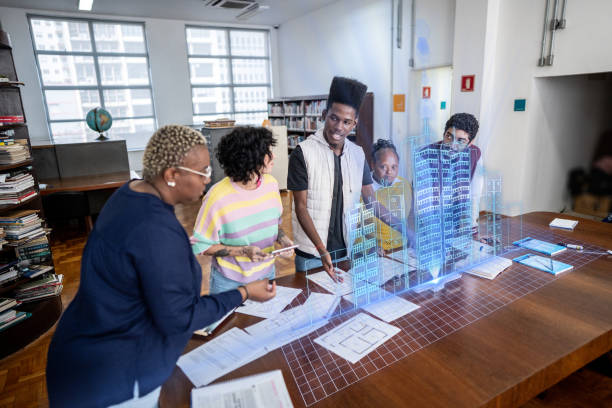Designing Tomorrow: Virtual Reality Simulations for Architectural Studies
In the ever-evolving field of architecture, where creativity meets functionality and innovation shapes spaces, virtual reality (VR) simulations are revolutionizing the way architects conceptualize, design, and experience built environments. By harnessing the immersive power of VR technology, architectural students can explore, iterate, and visualize architectural designs in three-dimensional virtual environments with unparalleled realism and interactivity. In this guide, we’ll delve into the transformative potential of VR simulations for architectural studies and highlight their key benefits and applications.
1. Immersive Design Exploration
VR simulations offer architectural students a unique opportunity to immerse themselves in virtual environments and explore architectural designs from multiple perspectives. By donning VR headsets, students can navigate through virtual buildings, interiors, and urban landscapes in real-time, experiencing spatial proportions, lighting conditions, and material textures with unparalleled realism. Immersive design exploration enables students to gain insights into the user experience, spatial relationships, and design implications that may not be apparent in traditional 2D drawings or renderings.
2. Real-Time Visualization and Iteration
VR simulations empower architectural students to visualize and iterate on design concepts in real-time, accelerating the design process and fostering creative experimentation. With VR modeling software like SketchUp, Revit, or Blender, students can create three-dimensional architectural models and import them into VR environments for instant visualization. They can manipulate design elements, adjust spatial configurations, and test different materials and finishes on the fly, soliciting immediate feedback and iterating on designs iteratively. Real-time visualization and iteration streamline the design workflow, enabling students to refine their ideas and make informed design decisions efficiently.
3. Spatial Understanding and Analysis
VR simulations enhance students’ spatial understanding and analytical skills by enabling them to interact with architectural designs in three-dimensional space. Through VR walkthroughs and flyovers, students can explore the spatial layout, circulation patterns, and functional zoning of architectural projects, gaining a deeper understanding of design principles and spatial relationships. They can analyze sight lines, circulation flows, and ergonomic considerations from a user’s perspective, informing design decisions that optimize spatial efficiency and user experience.
4. Collaborative Design Reviews
VR simulations facilitate collaborative design reviews and presentations, allowing architectural students to communicate their design concepts effectively and solicit feedback from peers, instructors, and clients. With multi-user VR platforms like VRChat, Mozilla Hubs, or The Wild, students can host virtual design charrettes, critique sessions, and client meetings in immersive virtual environments. Participants can interact with architectural models, annotate design elements, and engage in real-time discussions, fostering collaborative decision-making and consensus-building. Collaborative design reviews harness the collective intelligence and creativity of diverse stakeholders, enriching the design process and enhancing the quality of architectural outcomes.
5. Simulation-Based Learning
VR simulations support simulation-based learning experiences that enable architectural students to explore complex design scenarios and simulate real-world conditions. Students can simulate daylighting analysis, shadow studies, thermal performance evaluations, and acoustic simulations within VR environments, gaining insights into the environmental impact and performance of architectural designs. VR simulations also support parametric design and generative algorithms, enabling students to explore iterative design variations and optimize design solutions based on quantitative performance metrics.
6. Virtual Site Visits and Contextual Understanding
VR simulations facilitate virtual site visits and contextual understanding by enabling architectural students to explore real-world locations and cultural contexts virtually. Students can experience architectural landmarks, historic sites, and urban contexts through immersive VR tours, enriching their understanding of architectural history, cultural heritage, and contextual influences. Virtual site visits provide students with valuable insights into site analysis, contextual design considerations, and urban planning principles, informing their design decisions and fostering a holistic approach to architecture.
Conclusion:
Virtual reality simulations are transforming architectural education by providing students with immersive, interactive, and experiential learning experiences that transcend traditional design methods. By embracing VR technology, architectural students can explore, visualize, and iterate on architectural designs in unprecedented ways, gaining valuable insights into spatial relationships, design principles, and environmental performance. As VR simulations continue to evolve, they promise to revolutionize architectural education and practice, empowering the next generation of architects to design tomorrow’s built environments with creativity, innovation, and sustainability.
